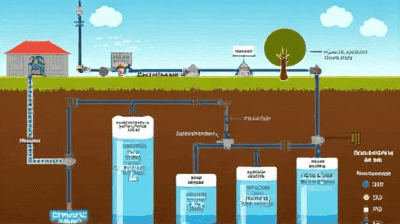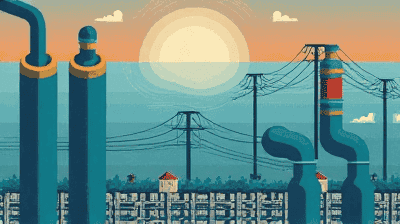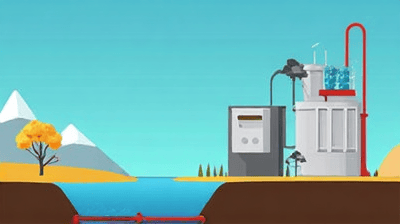
Water scarcity has emerged as one of the most pressing challenges of the 21st century, driven by climate change, population growth, urbanization, and unsustainable water management practices. As freshwater resources become increasingly limited, the need for innovative solutions to secure water supply is more critical than ever.
Water scarcity occurs when the demand for water exceeds the available supply or when water quality restricts its use. Several factors contribute to this situation:
Climate Change: Altered precipitation patterns and increased frequency of droughts have exacerbated water scarcity. Regions that traditionally relied on consistent rainfall are now facing prolonged dry spells, leading to reduced water availability.
Population Growth: As the global population continues to grow, the demand for water for drinking, sanitation, agriculture, and industry has surged, straining existing water supplies.
Urbanization: Rapid urban growth often leads to increased water consumption and pollution, which can degrade freshwater resources and hinder access to clean water.
Over-extraction: Unsustainable withdrawal of groundwater for agriculture and industrial use has led to the depletion of aquifers, further exacerbating water scarcity issues.
Pollution: Contaminated water sources can render large volumes of freshwater unusable, limiting access to safe drinking water and agricultural irrigation.
Agricultural Stress: Water scarcity threatens food production, as crops and livestock require sufficient water for growth. This can lead to food insecurity and increased prices.
Economic Consequences: Industries reliant on water resources, such as manufacturing, energy production, and tourism, face disruptions, leading to economic instability and loss of jobs.
Health Risks: Lack of access to clean water increases the risk of waterborne diseases and negatively impacts public health outcomes, particularly in vulnerable communities.
Social Conflict: Competition for limited water resources can lead to conflicts between communities, nations, and sectors, heightening tensions and instability.

Addressing water scarcity requires a multifaceted approach that incorporates both technological innovations and sustainable practices. Key solutions include:
Desalination is the process of removing salt and other impurities from seawater or brackish water to produce fresh, potable water. As coastal regions and islands often face water scarcity due to limited freshwater sources, desalination has gained attention as a viable solution.
There are two primary methods of desalination:
Reverse Osmosis: This popular method involves forcing seawater through a semipermeable membrane to remove salt and contaminants. The result is freshwater that can be used for drinking and irrigation.
Thermal Distillation: This method utilizes heat to evaporate water, leaving salts behind. The vapor is then collected and condensed back into liquid form. Though effective, thermal distillation is energy-intensive and less commonly used than reverse osmosis.
Abundant Water Supply: Desalination provides a consistent and reliable source of fresh water, especially for arid regions and islands.
Drought Resilience: By diversifying water sources, communities can reduce their vulnerability to drought and climate change impacts.
Technological Advancements: Continuing innovations in desalination technology promise to improve efficiency and reduce energy consumption.
High Energy Costs: Desalination processes, particularly reverse osmosis, require significant energy, raising operational costs and contributing to greenhouse gas emissions if fossil fuels are used.
Environmental Concerns: The disposal of concentrated brine, a byproduct of desalination, can adversely impact marine ecosystems if not managed properly.
Infrastructure Needs: Building desalination plants requires substantial investment and infrastructure development, which can be challenging for developing regions.
Rainwater harvesting is an ancient practice that involves collecting and storing rainwater for later use. It has gained renewed interest as a sustainable solution to water scarcity.
Rainwater harvesting systems typically comprise:
Catchment Area: The surface from which rainwater is collected, often rooftops or paved surfaces.
Gutters and Downspouts: These channels direct collected rainwater from the catchment area to storage tanks.
Storage Tanks: Rainwater is stored in tanks made of various materials, including plastic, concrete, or metal, and can be used for non-potable and potable purposes.
Filtration and Treatment: Before usage, rainwater may require filtration and treatment to ensure its safety for human consumption.
Supplementary Water Supply: Rainwater harvesting provides an additional source of water, reducing dependency on traditional supply systems and enhancing resilience.
Cost-Effective: Once installed, rainwater harvesting systems can significantly reduce water bills, especially in areas with high rainfall.
Environmental Benefits: Harvesting rainwater helps reduce stormwater runoff, decreasing the risk of flooding and erosion while promoting groundwater recharge.
Simplicity and Scalability: Rainwater harvesting systems can be designed to fit various scales, from individual households to large community systems, making them adaptable to different contexts.
Intermittent Supply: Rainwater availability depends on local precipitation patterns, making it unreliable in arid regions or during dry seasons.
Initial Investment: Although operational costs are low, the initial setup of rainwater harvesting systems may pose a financial barrier for some households.
Maintenance Requirements: Regular maintenance is essential to ensure that collection and storage systems remain functional and free from contamination.
Water recycling involves treating wastewater to make it suitable for reuse. This practice can significantly alleviate water scarcity by repurposing water that would otherwise be disposed of.
Collection: Wastewater is collected from various sources including households, industries, and agricultural operations.
Treatment: Various treatment processes, including primary, secondary, and tertiary treatments, are applied to remove contaminants and pathogens.
Reuse: Treated water can be reused for non-potable purposes such as irrigation, industrial processes, or toilet flushing. In some cases, advanced treatment methods enable the recycling of water for potable uses.
Conservation of Freshwater Resources: By reusing water, communities can conserve freshwater sources and reduce demand on existing supplies.
Cost Savings: Recycling water can save money in the long term, as it decreases the need for additional water supply infrastructure and treatment.
Environmental Impact: Water recycling reduces the volume of wastewater discharged into rivers and oceans, helping to protect aquatic ecosystems.
Perceptions and Acceptance: Public perceptions concerning the safety of recycled water can hinder acceptance, necessitating public education campaigns.
Infrastructure Costs: Establishing recycling systems can require significant investment in treatment facilities and distribution networks.
Israel has become a pioneer in desalination technology, investing significantly in this approach to tackle water scarcity. The country operates several desalination plants, the largest of which is the Sorek plant, capable of producing over 600,000 cubic meters of freshwater daily. By diversifying its water sources through desalination, Israel has significantly bolstered its water security, even during prolonged droughts. The country also integrates desalinated water with treated wastewater in agriculture, further optimizing its limited water resources.
Singapore has implemented a comprehensive rainwater harvesting system as part of its water management strategy. The country captures rainwater through an extensive network of drains, canals, and reservoirs, enabling efficient collection and storage. Singapore’s NEWater system treats and recycles wastewater for non-potable and potable uses, contributing to its “Four National Taps” strategy that includes desalination, imported water, stormwater, and groundwater. The city-state has effectively turned its water scarcity challenge into an opportunity for innovation and sustainability.
In response to chronic droughts, California has increased investments in water recycling programs. The state’s Santa Clara Valley Water District has developed advanced water treatment plants to recycle wastewater for agricultural use and groundwater replenishment. The program not only helps conserve freshwater resources but also builds community resilience in the face of climate-induced water shortages. Additionally, the state promotes incentives for local governments and businesses to adopt water recycling technologies.

Integrated Water Resource Management (IWRM) is a holistic approach that considers the interconnectedness of water, land, and communities. By integrating diverse water management strategies, including desalination, rainwater harvesting, and water recycling, IWRM promotes sustainable and equitable use of water resources. Collaborative planning among stakeholders ensures that local needs and environmental considerations are met.
Advancements in technology continue to drive improvements in water management solutions. Innovations such as smart irrigation systems, efficient water treatment processes, and remote monitoring can enhance water use efficiency and effectiveness in water scarcity solutions.
Governments play a crucial role in fostering environments conducive to water scarcity solutions. Implementing supportive policies, providing financial incentives for investing in sustainable water practices, and setting regulatory frameworks for water management can encourage adoption-driven change in communities.
Raising public awareness of water scarcity issues and available solutions is vital for fostering community participation and support. Educational programs, outreach campaigns, and local initiatives can empower individuals to adopt water-saving practices and support broader sustainability efforts.
Water scarcity is a pressing challenge impacting communities worldwide, necessitating immediate and innovative solutions. Approaches such as desalination, rainwater harvesting, and water recycling offer viable pathways for addressing this critical issue. By leveraging diverse strategies, promoting sustainable practices, and engaging communities in water management, societies can adapt to the realities of climate change and work toward achieving water security for future generations.
The journey towards mitigating water scarcity will require collaboration among governments, industries, and communities, along with continuous investment in technology and infrastructure. As we pursue these solutions, we must also recognize the importance of preserving and protecting our precious freshwater resources, ensuring a sustainable and resilient future for all.